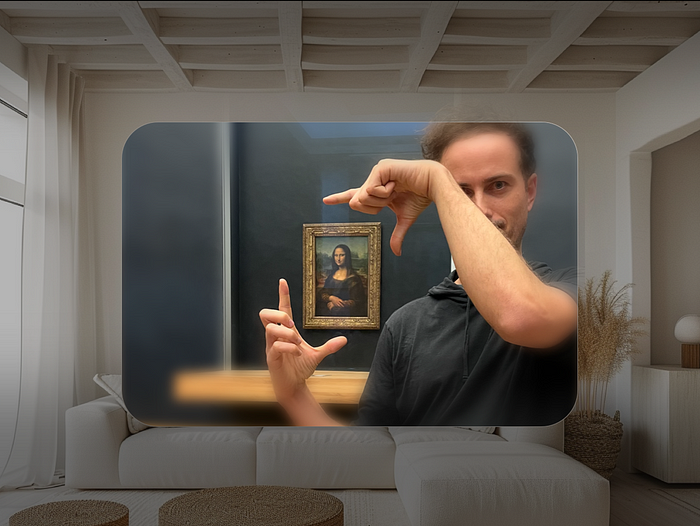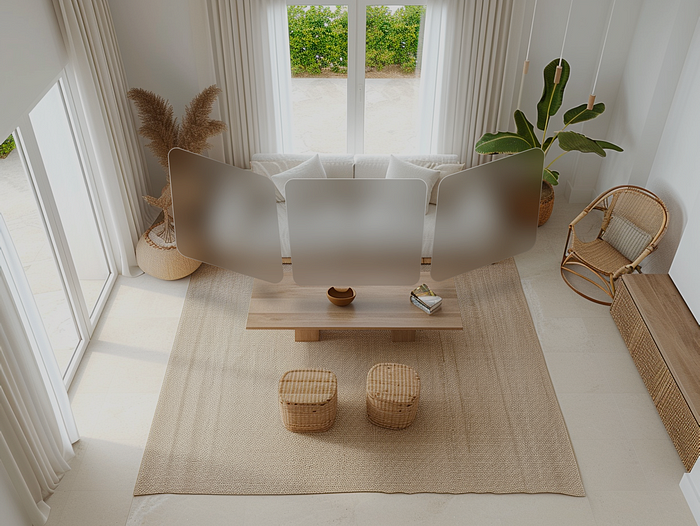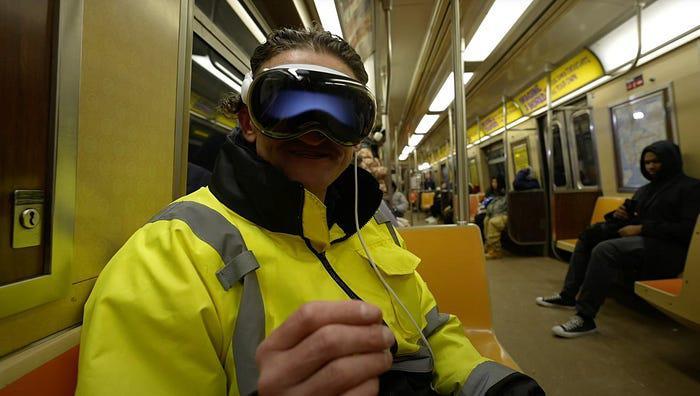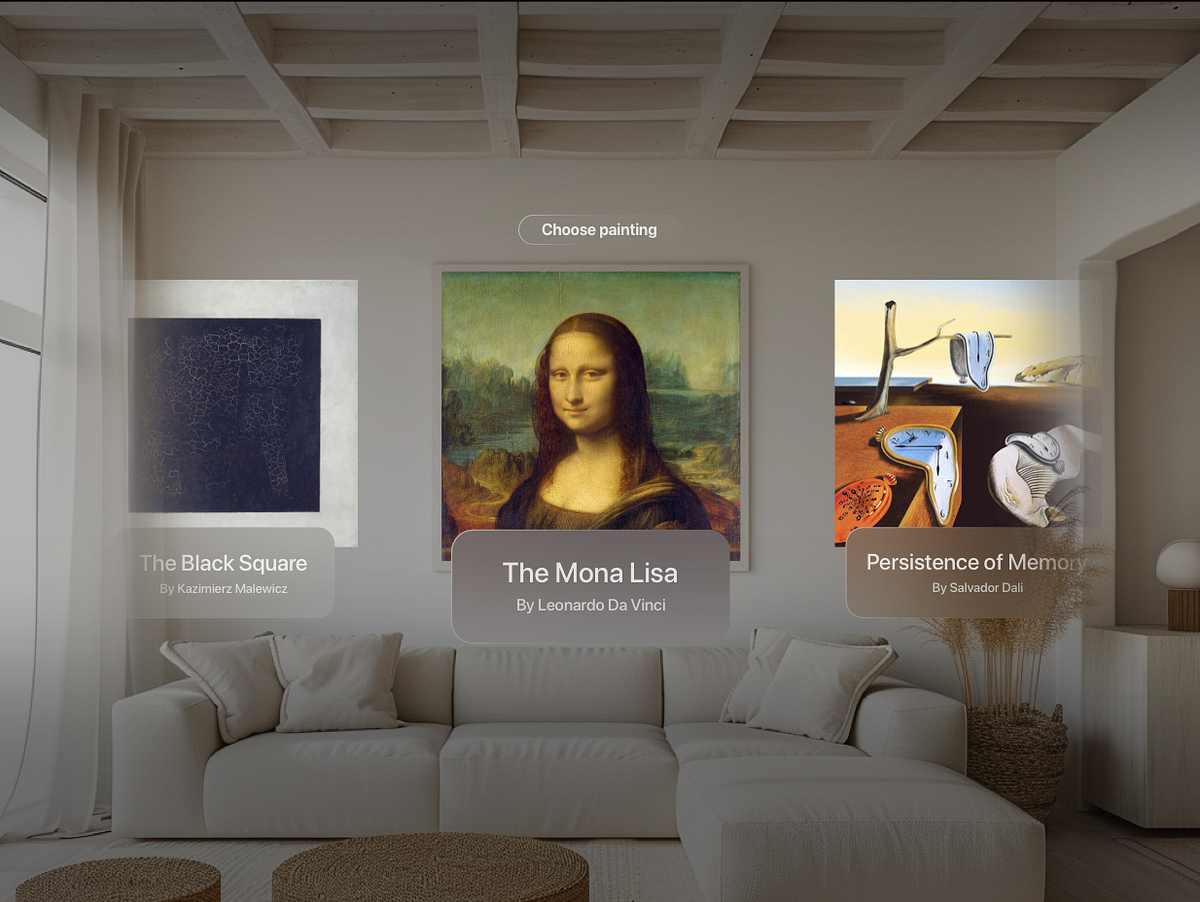Imagine whether you could buy the Mona Lisa. It would probably be very expensive, right? And even the version hanging in the Louvre is likely a copy.
It is currently valued at $970 million.
Yes, I mean the "painting" that appears when you search for art on Google. In real life, it would be much smaller, but it can easily fit on an empty canvas on the wall.

How much would you pay to have the perfect piece allowed by the Louvre copy on your living room wall? $500? $100? $50?
What if only 100 people in the world could have it? $10,000? $100,000?
This is something that crosses your mind when thinking about the future of spatial computing.

No, I’m not thinking about multiple floating finder windows around you, nor am I just typing emails with your index finger.
Let me explain some of my ideas.
Things. In your space.
Permanent room decoration. Listen! It’s like an NFT, but it actually has meaning.
This could be something like a painting or furniture.

However, instead of floating a window whenever you want to place it, this particular object lurks in your space - when you decide to take your Vision Pro on the subway in New York City (hello Casey!), it stays above you, fixed in its designated position on the wall behind you.
